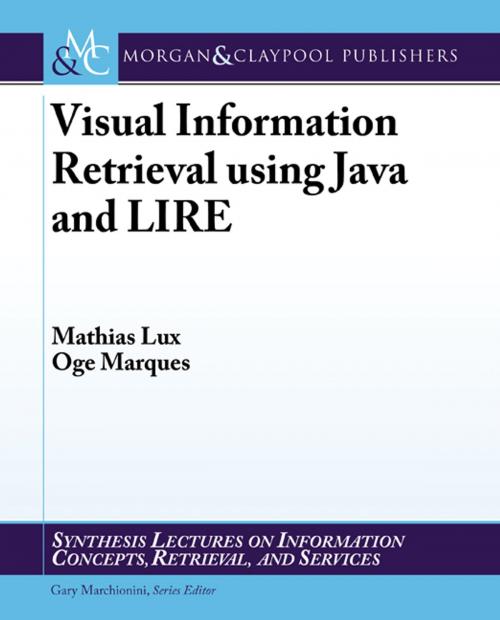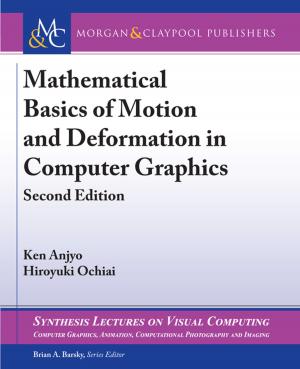Visual Information Retrieval using Java and LIRE
Nonfiction, Computers, Database Management, Information Storage & Retrievel| Author: | Mathias Lux, Oge Marques | ISBN: | 9781608459193 |
| Publisher: | Morgan & Claypool Publishers | Publication: | January 1, 2013 |
| Imprint: | Morgan & Claypool Publishers | Language: | English |
| Author: | Mathias Lux, Oge Marques |
| ISBN: | 9781608459193 |
| Publisher: | Morgan & Claypool Publishers |
| Publication: | January 1, 2013 |
| Imprint: | Morgan & Claypool Publishers |
| Language: | English |
Visual information retrieval (VIR) is an active and vibrant research area, which attempts at providing means for organizing, indexing, annotating, and retrieving visual information (images and videos) from large, unstructured repositories. The goal of VIR is to retrieve matches ranked by their relevance to a given query, which is often expressed as an example image and/or a series of keywords. During its early years (1995-2000), the research efforts were dominated by content-based approaches contributed primarily by the image and video processing community. During the past decade, it was widely recognized that the challenges imposed by the lack of coincidence between an image's visual contents and its semantic interpretation, also known as semantic gap, required a clever use of textual metadata (in addition to information extracted from the image's pixel contents) to make image and video retrieval solutions efficient and effective. The need to bridge (or at least narrow) the semantic gap has been one of the driving forces behind current VIR research. Additionally, other related research problems and market opportunities have started to emerge, offering a broad range of exciting problems for computer scientists and engineers to work on. In this introductory book, we focus on a subset of VIR problems where the media consists of images, and the indexing and retrieval methods are based on the pixel contents of those images -- an approach known as content-based image retrieval (CBIR). We present an implementation-oriented overview of CBIR concepts, techniques, algorithms, and figures of merit. Most chapters are supported by examples written in Java, using Lucene (an open-source Java-based indexing and search implementation) and LIRE (Lucene Image REtrieval), an open-source Java-based library for CBIR.
Visual information retrieval (VIR) is an active and vibrant research area, which attempts at providing means for organizing, indexing, annotating, and retrieving visual information (images and videos) from large, unstructured repositories. The goal of VIR is to retrieve matches ranked by their relevance to a given query, which is often expressed as an example image and/or a series of keywords. During its early years (1995-2000), the research efforts were dominated by content-based approaches contributed primarily by the image and video processing community. During the past decade, it was widely recognized that the challenges imposed by the lack of coincidence between an image's visual contents and its semantic interpretation, also known as semantic gap, required a clever use of textual metadata (in addition to information extracted from the image's pixel contents) to make image and video retrieval solutions efficient and effective. The need to bridge (or at least narrow) the semantic gap has been one of the driving forces behind current VIR research. Additionally, other related research problems and market opportunities have started to emerge, offering a broad range of exciting problems for computer scientists and engineers to work on. In this introductory book, we focus on a subset of VIR problems where the media consists of images, and the indexing and retrieval methods are based on the pixel contents of those images -- an approach known as content-based image retrieval (CBIR). We present an implementation-oriented overview of CBIR concepts, techniques, algorithms, and figures of merit. Most chapters are supported by examples written in Java, using Lucene (an open-source Java-based indexing and search implementation) and LIRE (Lucene Image REtrieval), an open-source Java-based library for CBIR.















